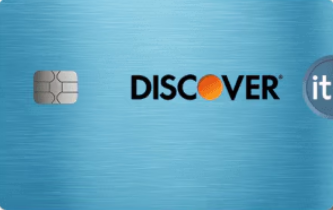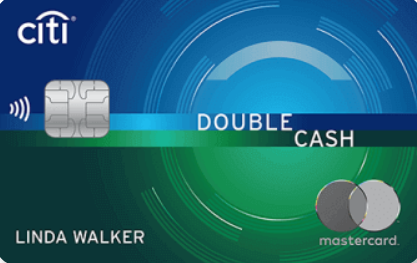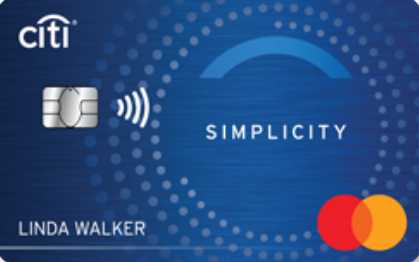Trustedcompanyreviews.com offers free content, reviews and ratings for consumers to read, aimed at helping them compare their options. We may receive advertising compensation from companies featured on our website, influencing the positioning and sequence in which brands (and/or their products) are displayed, as well as affecting the assigned ratings. Please note that the inclusion of company listings on this page does not constitute an endorsement. We do not feature all available providers in the market. With the exception of what is explicitly outlined in our Terms of Service, we disclaim all representations and warranties regarding the information presented on this page. The details, including pricing, displayed on this site may undergo changes at any time.
Best Balance Transfer Credit Cards for Average Credit Score Holders
The average credit score is currently 715, according to FICO, which is smack in the middle of the “good” range. If you’re looking for the best balance transfer credit cards for average credit, you’re in luck.
While most top-rated 0% APR offers target borrowers with excellent credit, a number of high-value cards still offer competitive balance transfer terms to people with good credit scores.
In this guide, we rank and compare the best balance transfer credit cards for average credit, including options with rewards, flexible limits, and a long intro APR on balance transfers.
Why trust Trusted Company Reviews
- Comprehensive review rating system.
- We work closely with consumers and experts to create editorial ratings.
Trusted Company Reviews #1 Pick for 2026

- 0% intro APR for 15 months
- 5% cash back in rotating categories
- No annual fee
Why we love it 💖
The Discover It card offers a powerful combination of long intro APR, no annual fee, and rotating cash back categories.
Our Highest Rated Balance Transfer Credit Card Companies

- Generous intro period for both purchases and transfers
- 3% balance transfer fee for 60 days
- Cashback Match doubles all rewards in the first year
- Easy-to-use mobile app
- 0% intro APR also applies to purchases
- High customer satisfaction ratings

- 0% intro APR on balance transfers for 18 months
- 3% balance transfer fee for 4 months
- Earn up to 2% cash back on all purchases (1% when you buy, 1% when you pay)
- No annual fee
- Consistently high user satisfaction scores
- Solid reputation for balance transfers

- 0% intro APR for 18 months
- No rewards program (intentionally simple to feature low APR)
- No annual fee
- 3% balance transfer fee for 60 days
- 0% intro APR also applies to purchases
- Solid option if you're focused purely on paying off transferred balances

- 0% intro APR for 21 months on balance transfers
- No late fees, ever
- No penalty APR
- No annual fee
- 3% balance transfer fee
- 0% intro APR for 12 months for purchases

- 0% intro APR for 12 months on balance transfers and purchases
- Low ongoing APR after intro period
- Minimal frills, but very low fees
- Must join Alliant Credit Union to apply
- Most consumers are eligible for membership
- Low, 2%, intro transfer fee
The Consumer Financial Protection Bureau issued a report in late 2023, with information that still holds true, saying in part, “We find one in ten general purpose accounts are charged more in interest and fees than they pay toward the principal each year, indicating a pattern of persistent indebtedness that could become increasingly difficult for some consumers to escape.”
If you’re managing credit card debt, a good interest rate and solid intro APR offer can make a serious difference in what you pay.
What Is a Balance Transfer Card and How Does It Work?
A balance transfer card lets you move existing credit card debt to a new card with a low or 0% intro APR. This can help reduce how much you pay in interest during the intro period, giving you time to catch up or pay off your balances faster. These cards often offer a low balance transfer APR for a set period, typically lasting between 12 and 18 months, with some offering up to 21 or 24 months.
What to Know About 0% Intro APRs and Balance Transfer Fees
Balance transfer cards generally charge a balance transfer fee, which is usually around 3% to 5% of the transferred balance amount. A longer intro APR on the balance transfer can make the fee worthwhile, especially if you’re paying off high-interest debt. Be sure to transfer within the required time window to qualify for the deal, as the transfer fee is likely to increase after that.
How to Choose the Right Balance Transfer Credit Card for Average Credit
With good credit, you’ll have access to a wider range of balance transfer credit cards than if you had fair or poor credit. However, they’ll be more limited than if you had excellent credit. That said, not all offers are created equal, regardless of your credit score.
Choosing the right card can help you pay off credit card debt at a lower interest rate, while the wrong one could leave you with unexpected costs once the intro period ends. Take time to compare details carefully before applying.
When comparing credit card offers, check for the following attributes and make sure they’ll work for your situation.
- The intro rate and how long it lasts
- The fee to transfer balances
- Whether credit cards offer rewards after the intro period
- Any annual fee, penalty APRs, or other potential costs exist
- Prequalification options, potentially including your credit limit eligibility
How to Maximize Rewards and Credit Score Benefits
After your intro APR offer ends, responsible use of the card can help improve your score. Look for cards that earn cash back or provide perks even after the intro APR on purchases and transfers ends. Always make at least the monthly payment to avoid losing the intro rate and experiencing other unpleasantries.
How Balance Transfer Cards Compare to Personal Loans for Debt Consolidation
Balance transfer cards feature short promotional periods and super-low or no APR. However, many offers come with a 3% to 5% balance transfer fee. In contrast, personal loans offer longer-term fixed interest rates and structured monthly payments. However, with average credit, you may have to pay an origination fee, which is usually between 1% and 10%.
So, from a cost perspective, you may be able to save money with a balance transfer card, but only if you can pay off the balance in short order. If you need longer to spread out the repayment period, one of the best personal loan providers may have the solution you need.
Your interest rate will increase dramatically after your credit card intro offer ends. A personal loan rate will remain the same for the duration of the loan agreement.
Another alternative is a home equity line of credit (HELOC), which typically allows multiple draws during the draw period, offering more flexibility than a lump-sum loan or single transfer.
Which is the Best Balance Transfer Credit Card for Average Credit?
The Discover it Cash Back card wins overall for its generous introductory terms, rewards, and additional perks. However, each of the cards on our list could make sense depending on your goals.
One of the most prominent scoring attributes in our review is whether the card issuers offer a prequalification step that won’t impact your credit score to check your eligibility. Each of the following cards offers that prequalification option, so you can shop around for the best card for you without suffering multiple hard inquiries on your report.
Top Balance Transfer Cards for Good Credit
|
Discover it Cash Back
Best Overall
Trusted Company Reviews Rating Score: 9.7
Review
The Discover it Cash Back card is the highest-rated balance transfer credit card for average credit in our review, due to its generous intro terms, long 0% APR period, and top-tier rewards. With 15 months of 0% interest on both purchases and balance transfers, it’s ideal for those looking to consolidate debt while earning cash back on everyday spending. The Cashback Match at the end of the first year effectively doubles your rewards, which is something few cards offer without an annual fee.
Features and Benefits
This card offers more than just balance transfer savings. It also offers excellent rewards and benefits. Discover’s 5% rotating categories help maximize cash back potential. Though you’ll have to periodically activate your chosen categories to earn the maximum rewards. New cardholders receive an automatic Cashback Match at the end of their first year, essentially doubling what you can earn.
- 0% intro APR on purchases and balance transfers for 15 months
- 3% intro balance transfer fee
- 5% cash back in rotating quarterly categories (activation required)
- Cashback Match doubles your first year’s rewards
- $0 annual fee
- Mobile app access
- Free Social Security number alerts (opt-in required)
- Custom card design options at application
Why We Chose It
The Discover it Cash Back card stands out for its overall value and substantial benefits. It’s not just good for balance transfers, it’s also a great everyday spending card with no annual fee, solid rewards, and excellent consumer ratings. For those with good credit, it provides a rare mix of short-term financial benefits and long-term potential often associated with cards that have stricter eligibility requirements.
Pros and Cons
Pros
- Excellent intro APR and rewards
- Cashback Match effectively doubles your first-year rewards
- No annual fee
Cons
- Requires quarterly activation to earn 5% rewards
- Balance transfer fee increases after promo deadline
- Rotating categories may not fit all spending styles
| Intro APR Period (months) | Intro Balance Transfer Fee | Annual Fee | Prequalification Available? |
| 15 | 3% | $0 | Yes |
Citi Double Cash
Best for: Flat-Rate Cash Rewards
Trusted Company Reviews Rating Score: 9.4
Review
The Citi Double Cash Card earns a solid score, in no small part due to its simplicity and long introductory APR period. With no annual fee and an 18-month 0% intro APR on balance transfers, it’s a top pick if you’re looking to pay down debt while enjoying long-term rewards. You’ll earn 2% cash back on every purchase, including 1% when you buy and 1% when you pay. There’s no need to activate categories or track rotating offers.
You can also enjoy a $200 welcome bonus and flexible redemption options through Citi’s ThankYou Points program.
Features and Benefits
Earn rewards on every purchase and every payment you make without limits, caps, or categories to enroll in.
- 0% intro APR for 18 months on balance transfers
- 2% cash back on every purchase
- $200 bonus after spending $1,500 in the first 6 months
- Earn 5% total cash back on hotels, car rentals, and attractions booked through Citi Travel
- Redeem rewards via statement credits, direct deposit, check, or other options
- No category restrictions or earnings caps
- Contactless payment and digital wallet compatibility
- 24/7 customer service and fraud protection
Why We Chose It
We included the Citi Double Cash Card in our overview for its mix of long-term value and balance transfer usefulness. While some cards we feature focus more on introductory offers, this one continues to deliver with an unlimited 2% effective cash back rate and a straightforward rewards structure.
Pros and Cons
Pros
- 2% unlimited cash back with no activation or caps
- Long 18-month 0% intro APR on balance transfers
- $200 welcome bonus when you meet spending requirement
Cons
- Balance transfers don’t earn rewards
- 3% foreign transaction fee
- Must redeem rewards through ThankYou Points system
| Intro APR Period (months) | Intro Balance Transfer Fee | Annual Fee | Prequalification Available? |
| 18 | 3% | $0 | Yes |
BankAmericard
Best for: Simplicity
Trusted Company Reviews Rating Score: 9.1
Review
The BankAmericard® stands out for its straightforward approach to balance transfers and interest savings. With a full 18 billing cycles of 0% introductory APR on both purchases and balance transfers, it’s a solid option for anyone simply seeking to pay down debt in short order.
Features and Benefits
This card is all about simplicity. It can be an excellent match if you’re looking to pay down debt without dealing with potentially confusing reward systems.
- 0% intro APR for 18 months on purchases and transfers
- 3% intro balance transfer fee for 60 days, then 4%
- No annual fee
- No penalty APR for late payments
- Access to free monthly FICO® Score updates
- Balance Connect overdraft protection from linked BoA accounts
- Security alerts and $0 liability for fraud
Why We Chose It
We chose BankAmericard for our list because it does exactly what many balance transfer seekers want, which is to simplify debt repayment. It’s not about flashy perks and confusing categories, but instead focuses on providing potential savings through a long-term lower APR. Unlike many cards that impose penalty APRs for a single mistake, BankAmericard will maintain your standard rate even if you pay late.
Pros and Cons
Pros
- Long 0% intro APR for both purchases and balance transfers
- No annual fee or penalty APR
- Low intro balance transfer fee during the first 60 days
Cons
- No rewards program or welcome bonus
- Balance transfers must be made within 60 days to qualify for intro rate
- Balance transfer fee increases to 4% after intro period ends
| Intro APR Period (months) | Intro Balance Transfer Fee | Annual Fee | Prequalification Available? |
| 18 | 3% | $0 | Yes |
Citi Simplicity
Best for: Longest Intro APR Period
Trusted Company Reviews Rating Score: 8.9
Review
The Citi Simplicity Card earns its rating by offering one of the longest 0% intro APR periods available—up to 21 months for balance transfers. That’s a big bonus if you need a little extra time to pay down a significant amount. Add in a $0 annual fee, no late fees, and no penalty APR, and it’s easy to see why this card is a top contender in our review. However, the lack of a rewards program keeps this card out of a top spot.
Features and Benefits
This card is best for those who want extended repayment time without worrying about penalties or annual fees.
- 0% intro APR for 21 months on balance transfers
- 0% intro APR for 12 months on purchases
- 3% intro balance transfer fee for four months
- No annual fee
- No late payment fees
- No penalty APR for missed payments
- Ability to choose your own payment due date
Why We Chose It
We selected the Citi Simplicity Card for our review because of its unmatched 21-month intro APR period on balance transfers, which is one of the longest you’ll find anywhere, regardless of credit score or feature tier. The $0 annual fee and no late fees policy also provides extra flexibility.
Pros and Cons
Pros
- Industry-leading 21-month intro APR on balance transfers
- No late fees or penalty APR
- No annual fee
Cons
- No rewards or cash back
- Balance transfers must be completed within 4 months
| Intro APR Period (months) | Intro Balance Transfer Fee | Annual Fee | Prequalification Available? |
| 21/transfers
12/purchases |
3% | $0 | Yes |
Alliant Visa Platinum
Best for: Credit Union Simplicity
Trusted Company Reviews Rating Score: 8.7
Review
Like a couple of others in our review, the Alliant Visa Platinum also earns its rating in part due to its simplicity. While it only offers a 0% intro APR for 12 months on purchases and balance transfers, its low 2% transfer fee and no annual fee stand out. The most appealing aspects of this card are its association with Alliant, its low average APR even after the intro, and its potential for excellent credit limits.
Features and Benefits
Alliant provides low fees, strong intro offers, and potentially high credit limits. The Visa Platinum Card is a practical tool for managing or consolidating debt while maintaining simplicity.
- 0% intro APR for 12 months on purchases and balance transfers
- Low standard variable APR (14.49%–26.49%) after intro ends
- 2% balance transfer fee
- No annual fee
- Auto rental collision damage waiver coverage
- Access to 24/7 customer service and online banking
- Supports Apple Pay, Google Pay, and Samsung Pay
Why We Chose It
We included the Alliant Visa Platinum card in our review because of its simplicity, high credit limit potential, and practical balance transfer benefits. The 12-month intro APR is shorter than its nearest competitors, but the 2% transfer fee makes it competitive, especially when paired with its no annual fee.
Pros and Cons
Pros
- 0% intro APR for 12 months on transfers and purchases
- No annual fee and a low 2% transfer fee
- Prequalification available with no credit score impact
Cons
- No rewards or cash back program
- Shorter intro APR period than some competitors
- Requires Alliant Credit Union membership
| Intro APR Period (months) | Intro Balance Transfer Fee | Annual Fee | Prequalification Available? |
| 12 | 2% | $0 | Yes |
Frequently Asked Questions
These are some of the most common questions surrounding balance transfer credit cards for average credit
No, your balance transfer cannot exceed your available credit limit. Some issuers may allow you to transfer up to a set percentage, often around 75% to 95% of your approved credit limit. However, it can depend on your creditworthiness and the account type or offer.
A balance transfer itself doesn’t directly hurt your credit score, but applying for a new card will trigger a hard inquiry. Over time, responsible usage and reducing your total credit card debt can help to improve your score.
Avoid a balance transfer if you can’t pay off the debt during the intro period, if fees are too high, or if it tempts you to spend more because more credit is now available to you. Also, skip it if your credit score won’t qualify you for a competitive intro APR offer. That said, if you can obtain a card with a low enough overall rate, a balance transfer can still make sense if the savings add up to significantly more than any associated transfer fees.
Conclusion
Balance transfer credit cards can be a powerful way to consolidate credit card debt, especially if you qualify for a 0% intro APR and can pay off the balance quickly. But they aren’t always the right fit, particularly if your debt load is high, an aggressive repayment timeline feels out of reach, or opening another credit card doesn’t sit well with you.
If that’s the case, a personal loan or a debt consolidation loan may be a smarter, more relaxed alternative. With fixed interest rates, predictable monthly payments, and longer repayment terms, personal loans can offer peace of mind and smaller payments, while still moving your finances forward.
